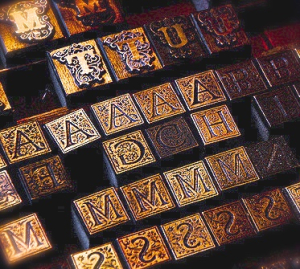By Dr. Ken Broda- Bahm:
This blog is written in Arial font. While I can’t fully control the fonts it shows up in when it travels out in various forms of syndication, for the version that lives on my, I like Arial. It is a contemporary San Serif font that is pretty simple and clean, and in common use these days. But, I admit, I have not paid much attention to it. A piece from this past summer by Brendan Kenny in The Lawyerist, however, suggests that I should. And, more broadly, the piece recommends that lawyers should pay more attention to fonts in written persuasion. In the essay entitled, “Hey Hey, Ho Ho, 19th Century Fonts Have Got to Go,” Kenny quotes attorney Mathew Butterick writing that, “Typography is the visual component of the written word.” Litigators like to believe that content is king — and it ought to be, particularly in written argument. But in other settings, lawyers would not ignore the visual component, and the same ought to hold for fonts: Pay attention to what it says…but don’t ignore how it looks.
It is not just the font, but the overall typography including white space, that invites a reader in and makes attention and comprehension not just possible, but easy. Brendan Kenny writes about “RADD” or “Revoked Attention Donation Disorder” that can be a court’s response to poor font use or bad typography. The phrase “revoked attention” is a good way of thinking about it. Readers will typically donate at least some level of attention as they begin to read, but that donation can be revoked if there isn’t a reward, or if there is too much of a punishment attached to the task. “Judges develop RADD,” Kenny writes, “when lawyers squander the gift of the judge’s attention by ‘scatter[ing] some words across some pages’ instead of presenting those words in the most effective and persuasive way possible.” In this post, I’ll share a few thoughts on font as they relate to written persuasion in litigation as well as their use in demonstrative exhibits.
Think About Font in Briefing
Brendan Kenny writes that “Bad fonts drive out good fonts,” and law seems to be a setting where that is particularly true. Many habits lawyers bring to written persuasion are left over from the era of typewriters. There is also the power of habit: Lawyers do what other lawyers do, and when everyone is using Times New Roman at 12 points, then that starts to look like a rule. Of course, in some cases, it actually is. A handful of courts do still tell attorneys what fonts to use, and, shame on you, Alabama, Massachusetts, and New Jersey appellate courts for forcing attorneys to use Courier.Times New Roman, however, is probably the most common choice and won the informal Twitter poll Brendan Kenny conducted for his article. But it is clearly a “19th century font,” and has been in steep decline — outside the law, at least — for many years. TNR won just a plurality in Kenny’s poll of lawyers, though, with a substantial number moving to Georgia or Garamond, or fonts specifically designed for law like those from Mathew Butterick. Kenny concludes with a very convincing ‘Scribd’ side by side comparison of the same brief, first written in an ancient nonproportional font (where the “i” is just as wide as the “w,”), and second with a more modern — Garamond, I think, — font. The difference is striking and should set to rest the idea that font doesn’t matter.
Think About Fonts in Trial Exhibits
The conventional wisdom is that a serif font — with the little lines at the ends of letters — is better for extended reading, while a San Serif should be used for shorter punchier shorter texts, and especially for labels. In designing demonstratives, the best advice is to keep them simple, use fewer words, and design them to be read quickly, even instantly. When working with call-outs from documents, it is usually best to stick with the choice already in the document by using a cropped image (as Trial Director or Sanction does) or by recreating the same font on a slide, since that visually reinforces the accuracy of the quotation. When quoting apart from the immediate document, however, you can make it any font you want. For that use, you would think that the main point is to make it easy to process, and that likely is the main point most of the time. But there is one interesting exception. A post in A2L Consulting’s Litigation Consulting Report written a few years back, reports on research indicating that in situations where you are trying to avoid the jurors’ confirmation bias, pre-existing attitudes, or quick reactions, it helps to slow down their mental processing a bit, and a less familiar or harder to read font does just that. In most cases, though, quick and effective communication is going to be your goal, and your tools to getting your exhibit there will be:
- Sparing use of text, only when necessary
- A clean, simple, and large San Serif font
- Plenty of white space so the eye knows where to go
______
Other Posts on Written Persuasion:
______
Photo Credit, robmcm, Flickr Creative Commons
